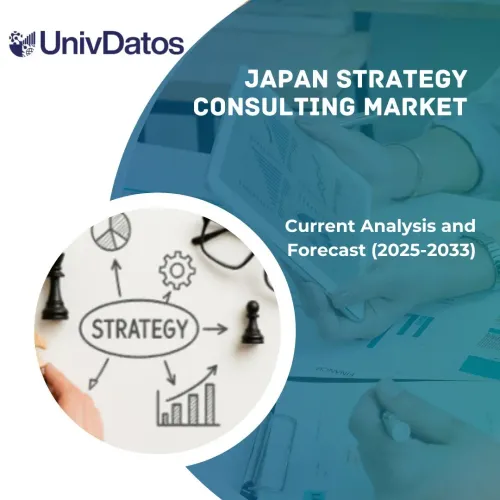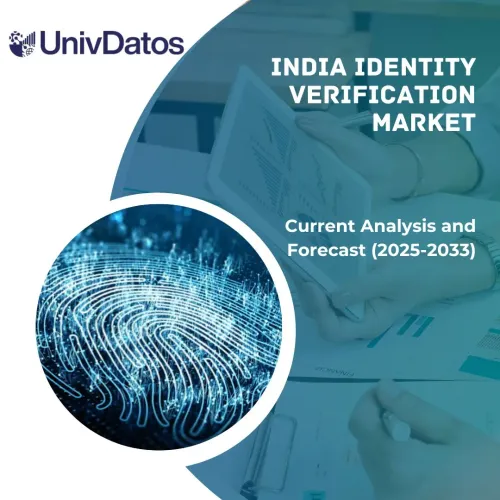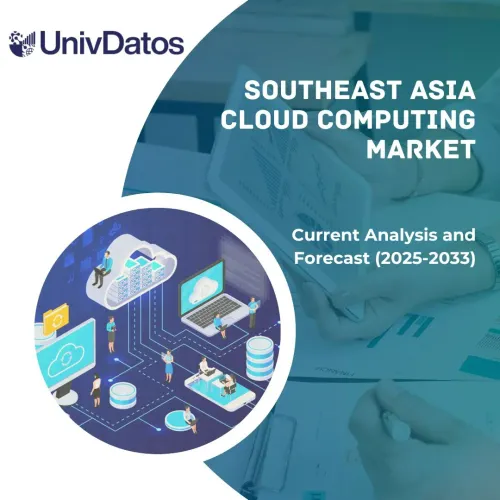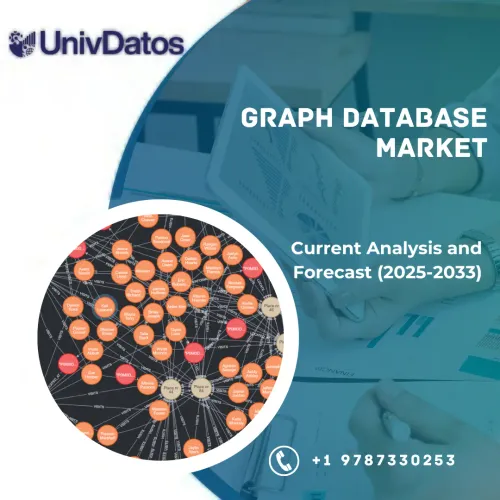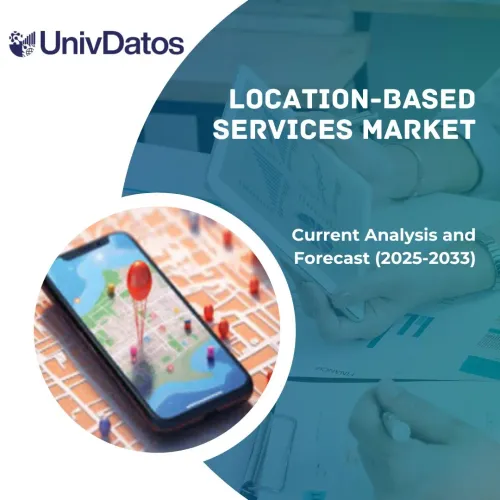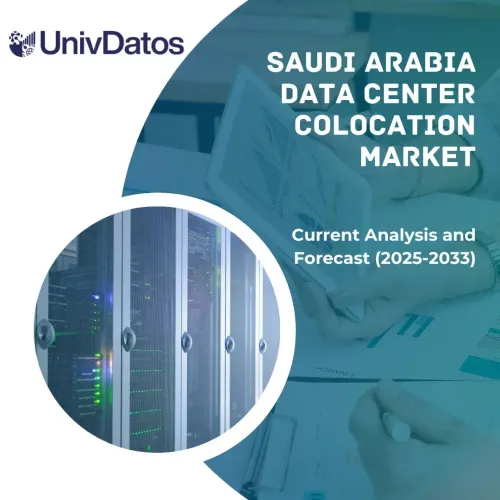- Home
- About Us
- Industry
- Services
- Reading
- Contact Us
Intelligent Process Automation Market: Current Analysis and Forecast (2021-2027)
Emphasis on Component (Solutions and Services); Technology (Machine Learning, Natural Language Processing, Neural Network, Virtual Agent, and Others); Deployment (On-Premises and Cloud); Organization Size (Large Enterprises and SMEs); Application (IT Operations, Application Management, Content Management, Security, and Others); Industry (Banking and Financial Services, Information and Communication Technology, Consumer Goods and Retail, Manufacturing, Healthcare, and Others); and Region/Country
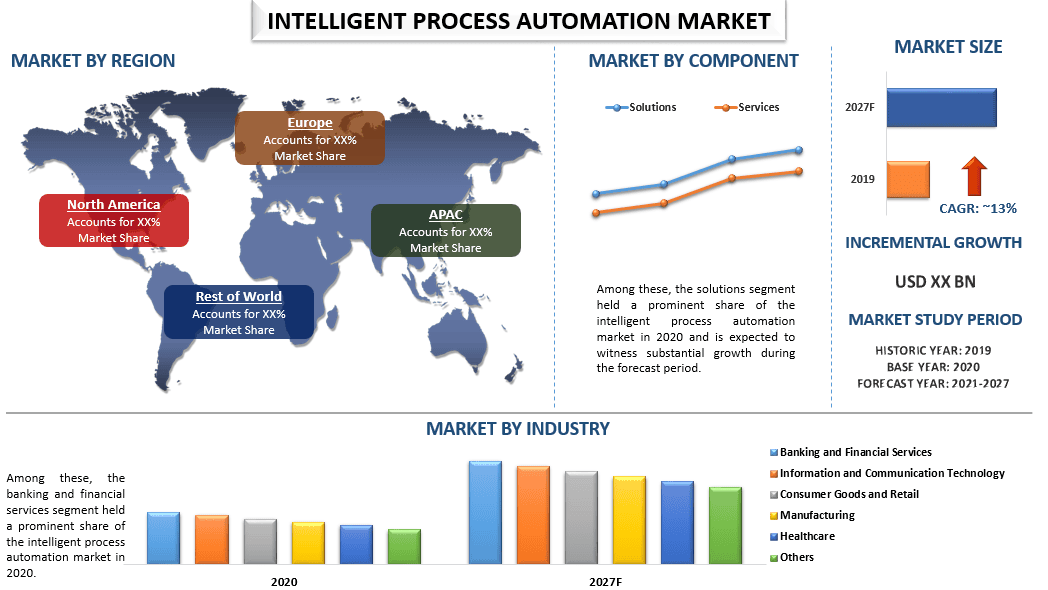
The global intelligent process automation market is expected to register a CAGR of around 13% over the period of 2021-2027. The global intelligent process automation market is uplifting on account of the growing demand for automated processes to modify traditional operations and the increasing requirement for quick decision-making across organizations. Moreover, increasing demand for reducing operating costs while maintaining the quality and efficiency of business processes followed by the growth in the adoption of robotic process automation (RPA) will positively stimulate the industry landscape. Intelligent process automation refers to the application of artificial intelligence and related new technologies such as computer vision, cognitive automation, and machine learning to robotic process automation. In addition, advancements in AI, machine learning, and RPA technologies are further propelling the intelligent process automation market.
International Business Machines Corporation, Atos SE, Capgemini SE, HCL Technologies Limited, Blue Prism Limited, Accenture Plc, Cognizant Technology Solutions, Tech Mahindra Limited, Hyper Labs Inc., and Pegasystems Inc. are some of the key players in the market. Several M&As along with partnerships have been undertaken by these players to facilitate customers with hi-tech and innovative products/technologies.
Insights Presented in the Report
“Amongst technology, the virtual agent segment is likely to showcase significant growth over the forecast period”
On the basis of technology, the market is categorized into machine learning, natural language processing, neural network, virtual agent, and others. The virtual agent segment is expected to be the prominent shareholder of global intelligent process automation during the forecast period owing to the rising implementation of virtual agents in financial institutions along with the increasing investments in virtual agents by various industries. One benefit of an intelligent virtual assistant is that they can keep track of information throughout a conversation and learn as they go.
“Amongst industry, banking and financial services industry captured a prominent share in the market in 2020”
Based on industry, the market is segmented into banking and financial services, information and communication technology, consumer goods and retail, manufacturing, healthcare, and others. Among these categories, banking and financial services held a significant share of the global intelligent process automation market in 2020 and are expected to witness a robust growth rate during the forecast period. The growth of this segment can be attributed to the automation of repetitive tasks, such as data entry, compliance regulations, and assembly and formulation that enables enhancements in improving speed and efficiency.
“APAC to witness significant growth during the forecast period”
APAC accounted for a significant share of the global intelligent process automation market and is expected to grow at a steady growth rate during the forecast period. This can be attributed to the rising number of large, medium, and small enterprises and high spending by enterprises to optimize business operations. Further on, the adoption of intelligent process automation by governments is further propelling the growth of this market in the region. In addition, the growing banking and financial services industry is another factor contributing to the intelligent process automation market in the region. For instance, according to the Indian Brand Equity Foundation (IBEF), India’s fintech market is expected to reach USD 83.48 Bn by 2025.
Reasons to buy this report:
- The study includes market sizing and forecasting analysis validated by authenticated key industry experts.
- The report presents a quick review of overall industry performance at one glance.
- The report covers an in-depth analysis of prominent industry peers with a primary focus on key business financials, product portfolio, expansion strategies, and recent developments.
- Detailed examination of drivers, restraints, key trends, and opportunities prevailing in the industry.
- The study comprehensively covers the market across different segments.
- Deep dive regional level analysis of the industry.
Customization Options:
The global intelligent process automation market can further be customized as per the requirement or any other market segment. Besides this, UMI understands that you may have your own business needs, hence feel free to connect with us to get a report that completely suits your requirements.
Table of Content
Research Methodology for the Intelligent Process Automation Market Analysis (2021-2027)
Analyzing the historical market, estimation of the current market, and forecasting the future market of the global intelligent process automation market were the three major steps undertaken to create and analyze the adoption of intelligent process automation in major regions globally. Exhaustive secondary research was conducted to collect the historical market numbers and estimate the current market size. Secondly, to validate these insights, numerous findings and assumptions were taken into consideration. Moreover, exhaustive primary interviews were also conducted, with industry experts across the value chain of the global intelligent process automation market. Post assumption and validation of market numbers through primary interviews, we employed a top-down/bottom-up approach to forecasting the complete market size. Thereafter, market breakdown and data triangulation methods were adopted to estimate and analyze the market size of segments and sub-segments of the industry pertains to. Detailed methodology is explained below:
Analysis of Historical Market Size
Step 1: In-Depth Study of Secondary Sources:
Detail secondary study was conducted to obtain the historical market size of the intelligent process automation market through company internal sources such as annual report & financial statements, performance presentations, press releases, etc., and external sources including journals, news & articles, government publications, competitor publications, sector reports, third-party database, and other credible publications.
Step 2: Market Segmentation:
After obtaining the historical market size of the intelligent process automation market, we conducted a detailed secondary analysis to gather historical market insights and share for different segments & sub-segments for major regions. Major segments included in the report as the component, technology, deployment, organization size, application, and industry. Further country-level analyses were conducted to evaluate the overall adoption of testing models in that region.
Step 3: Factor Analysis:
After acquiring the historical market size of different segments and sub-segments, we conducted a detailed factor analysis to estimate the current market size of the Intelligent Process Automation market. Further, we conducted factor analysis using dependent and independent variables such as various component, technology, deployment, organization size, application, and industry of intelligent process automation. A thorough analysis was conducted for demand and supply-side scenarios considering top partnerships, mergers and acquisitions, business expansion, and product launches in the intelligent process automation market sector across the globe.
Current Market Size Estimate & Forecast
Current Market Sizing: Based on actionable insights from the above 3 steps, we arrived at the current market size, key players in the global intelligent process automation market, and market shares of the segments. All the required percentage shares split, and market breakdowns were determined using the above-mentioned secondary approach and were verified through primary interviews.
Estimation & Forecasting: For market estimation and forecast, weights were assigned to different factors including drivers & trends, restraints, and opportunities available for the stakeholders. After analyzing these factors, relevant forecasting techniques i.e., top-down/bottom-up approach was applied to arrive at the market forecast about 2027 for different segments and sub-segments across the major markets globally. The research methodology adopted to estimate the market size encompasses:
- The industry’s market size, in terms of revenue (USD) and the adoption rate of the intelligent process automation market across the major markets domestically
- All percentage shares, splits, and breakdowns of market segments and sub-segments
- Key players in the global intelligent process automation market in terms of solutions offered. Also, the growth strategies adopted by these players to compete in the fast-growing market
Market Size and Share Validation
Primary Research: In-depth interviews were conducted with the Key Opinion Leaders (KOLs) including Top Level Executives (CXO/VPs, Sales Head, Marketing Head, Operational Head, and Regional Head, Country Head, etc.) across major regions. Primary research findings were then summarized, and statistical analysis was performed to prove the stated hypothesis. Inputs from primary research were consolidated with secondary findings, hence turning information into actionable insights.
Split of Primary Participants in Different Regions
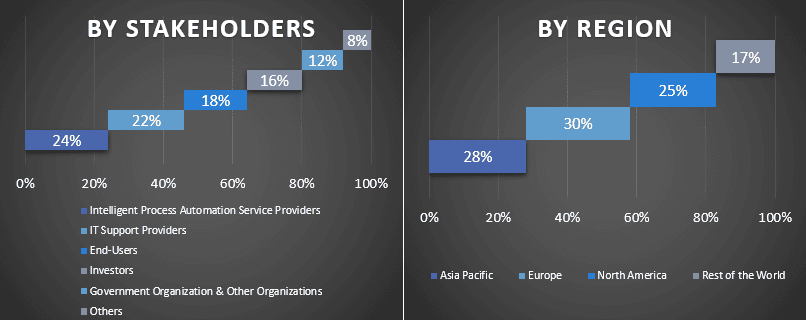
Market Engineering
Data triangulation technique was employed to complete the overall market estimation and to arrive at precise statistical numbers for each segment and sub-segment of the global intelligent process automation market. Data was split into several segments & sub-segments post studying various parameters and trends in the areas of the component, technology, deployment, organization size, application, and industry in the global intelligent process automation market.
The main objective of the Global Intelligent Process Automation Market Study
The current & future market trends of the global intelligent process automation market were pinpointed in the study. Investors can gain strategic insights to base their discretion for investments from the qualitative and quantitative analysis performed in the study. Current and future market trends determined the overall attractiveness of the market at a regional level, providing a platform for the industrial participant to exploit the untapped market to benefit as a first-mover advantage. Other quantitative goals of the studies include:
- Analyze the current and forecast market size of the intelligent process automation market in terms of Value (USD). Also, analyze the current and forecast market size of different segments and sub-segments
- Segments in the study include areas of the component, technology, deployment, organization size, application, and industry
- Define and analysis of the regulatory framework for the intelligent process automation market industry
- Analyze the value chain involved with the presence of various intermediaries, along with analyzing customer and competitor behaviors of the industry
- Analyze the current and forecast market size of the intelligent process automation market for the major region
- Major countries of regions studied in the report include Asia Pacific, Europe, North America, and Rest of the World
- Company profiles of the intelligent process automation market and the growth strategies adopted by the market players to sustain in the fast-growing market
- Deep dive regional level analysis of the industry
Related Reports
Customers who bought this item also bought



